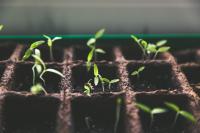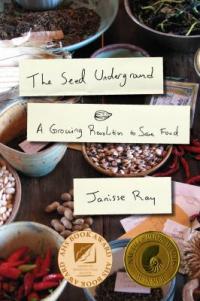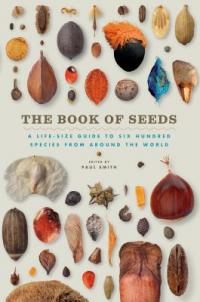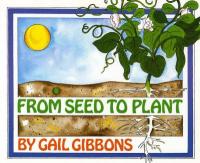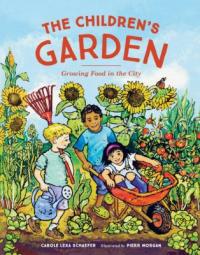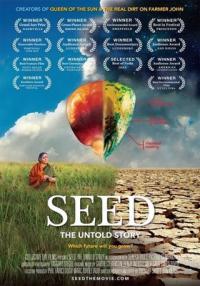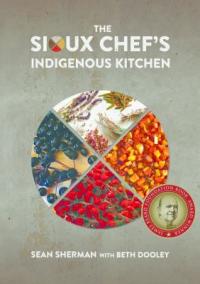The beginning of almost any meal you’ve ever eaten first started as a seed. In addition to having everything needed to form a plant (a set of leaves, a tiny root, and food), seeds have information about previous growing conditions encoded in their genes. By planting and later saving seeds we can grow plants that will become adapted to the specific environment of our bioregion over time, strengthening our local food system and building biodiversity. Choosing seeds that were grown locally and organically will improve the likelihood of a successful garden. And choosing seeds from foods that you like to eat will increase your enjoyment!
Growing plants from seeds requires a little more planning than buying seedlings from the store, but watching them emerge from the soil and take shape into the plants they will become is worth the effort.
First, you’ll need to consider how long each plant needs to mature - this information can typically be found on the back of a seed packet. To find out when to plant it, you can subtract the number of days to maturity from the first frost date in the fall. If it’s a warm season plant (not frost tolerant) that needs to be planted before the last frost date in the spring, then you’ll need to start growing it indoors. If you're still not sure what seeds to plant now, check out the Old Farmer's Almanac Planting Calendar - just type in your zip code!
Next, decide where your seedlings will grow until they're ready to be transplanted outside. In order to grow, healthy seedlings need a lot of light. Either a south-facing window or a set of shop lights on a timer will work. It’s also important to consider that many seedlings will need to be up-potted, or moved into bigger containers, before they’re ready to be planted in the ground.
Once you’ve found the perfect spot for your seeds, it’s time to gather the right materials. Seeds can be planted in all sorts of containers: plastic planters, empty egg cartons, toilet paper rolls, newspaper, old yogurt containers (cleaned), etc. Choose whatever you have on hand or visit a local plant nursery; just make sure that there are holes for water to drain out of in the bottom of your containers. You’ll then need to fill your containers with something for the seeds to grow in. Organic, bagged potting mix is best (synthetic fertilizers can burn seedlings). Seeds should be planted at a depth of twice their diameter - the smaller the seed, the closer it should be to the surface of the soil and vice versa.
After planting your seeds, they will need to be kept moist until they sprout. One easy way to do this is to place them on a tray filled with water, refilling it daily or until it dries up - whichever comes first. After your seeds have sprouted, you can remove the tray and water them when the soil is dry to the touch.
The final step is transplanting your seedlings into the garden! In order to prepare them for the outside world, your seedlings will need to get acclimated bit by bit - an hour in the shade at first, then an hour in full sun, and finally a night spent outside.
-written by Amelia Eckles
Resources:
Books
The Seed Underground: a Growing Revolution to Save Food by Janisse Ray
Botany in a Day by Thomas J. Elpel
The Book of Seeds: A Life Size Guide to Six Hundred Species Around the World by Dan Jason
Eating the Landscape by Enrique Salmón
Children’s Books
From Seed to Plant by Gail Gibbons
Potatoes on Rooftops: Farming in the City by Hadley Dyer(children’s nonfiction!)
The Children’s Garden: Growing Food in the City by Carole Lexa Schaefer
Films
Seed: The Untold Story
Gather (available on Kanopy)
Cookbooks
The No Waste Vegetable Cookbook: Recipes and Techniques for Whole Plant Cooking by Linda Ly
Cooking with Seeds by Charlyne Mattox
In a Nutshell: Cooking and Baking with Nuts and Seeds by Cara Tannenbaum
The Sioux Chef’s Indigenous Kitchen by Sean Sherman
